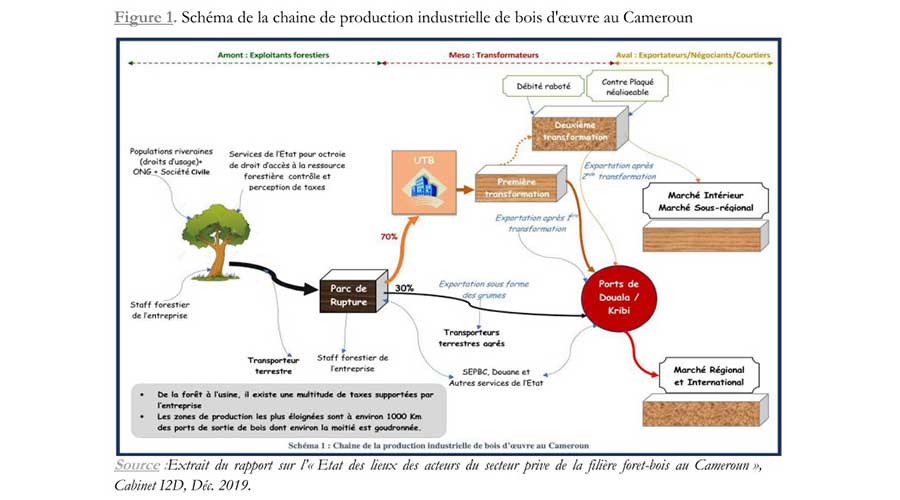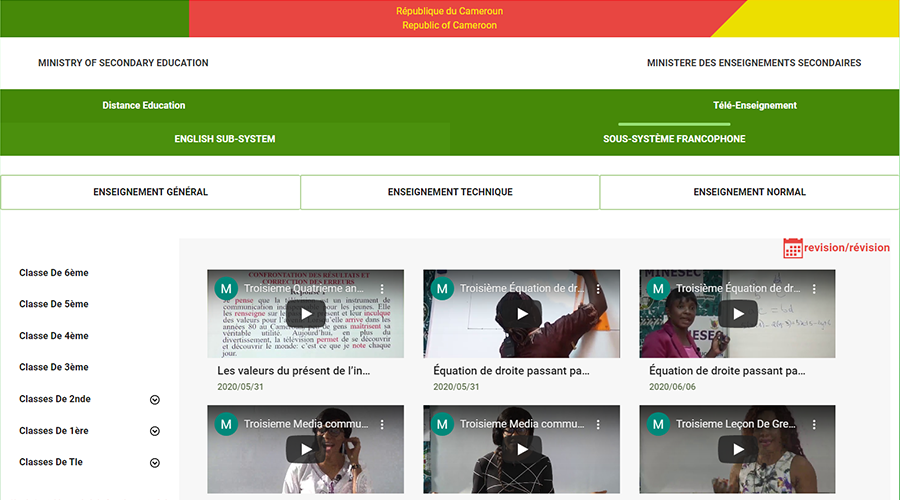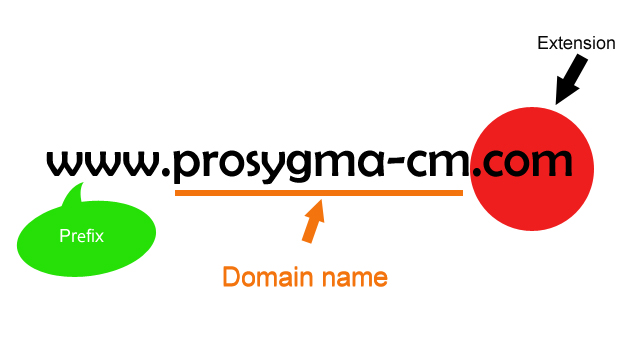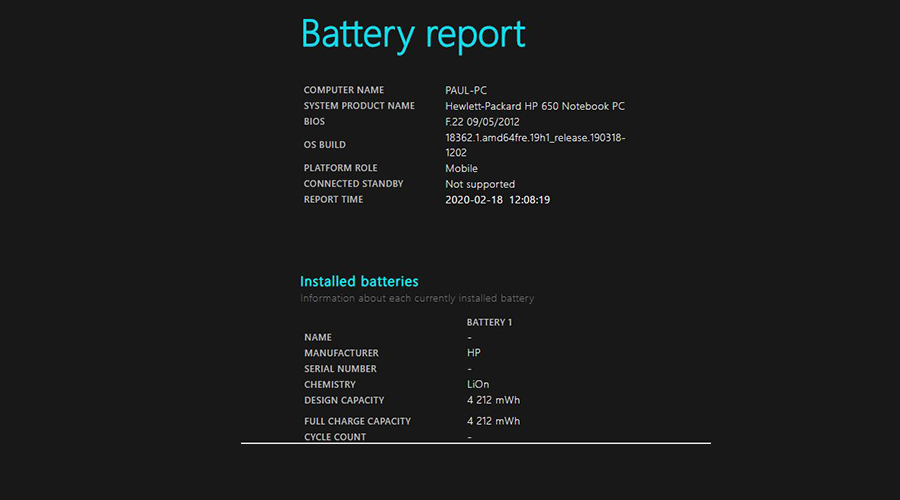
The challenges of traceability in the timber sector in Cameroon: from the forest to the local or international market
Summary
Definition
The main activities of the sector
The production chain
The shortcomings of the sector
Traceability at the operational level
Pallitracks
Definition :
The wood sector refers to all the phases of the production process from the collection of the raw material to the finished or semi-finished product sold on the national or international market. It gathers all the main actors who intervene to cultivate, cut, transport, transform, market and recycle the wood until it reaches the final user or its end of life.
The main activities of the sector
Depending on the country or context, the timber sector can be subdivided into sub-sectors or activity segments. In Cameroon, the main activities are
Wood production and harvesting (forestry and logging),
Primary wood processing (sawmills, plywood, chipboard, etc.),
Sawing and woodworking,
Secondary wood processing (paper and cardboard industry, furniture manufacturing, wood construction and various objects),
Export and marketing
According to the thematic report of the National Institute of Statistics (INS) on "the study of the timber sector in Cameroon" (EAE-2019), the timber sector is a lever of economic growth for Cameroon, which has 22 million hectares of forest.
It represents nearly 5.4% of GDP and is the second largest source of foreign exchange in Cameroon with 15% of export earnings in recent years. This report highlights a low level of wood processing, with activity generally stopping at sawing and wood exports.
In terms of foreign trade, the export rate of the timber sector has experienced a contrasting evolution between 2011 and 2018. There is an increase attributable to silvicultural products, logs that go from 34.2 billion FCFA in 2016 to 138.9 billion FCFA in 2017 to reach 156.3 billion FCFA in 2018.
The production chain
The diagram above summarizes the production chain:
Like other states in the Central African sub-region, the State of Cameroon has granted use rights to local and indigenous populations over the forest areas they own. However, the State, which holds a monopoly on these areas, grants access rights to loggers, NGOs and members of civil society, among others. The forestry policy in place structures the use of forest resources in order to protect biodiversity through
- Tree felling measures (protected species, appropriate felling techniques to minimize felling damage, etc.),
- The definition of protected areas such as watersheds, sites of special interest (biological or cultural) and ecologically fragile areas such as swamps,
- Reforestation.
When the trees are felled, they are transported to the break-up yard for exploitation by the companies' technical team. We then speak of logs to designate the felled tree trunks, stripped of their crowns and branches. In about 70% of the cases, the logs are transported to the wood processing units (UTB), while a part of 30% is immediately conditioned to be exported.
At the unit, the wood transformation process is triggered according to the objectives of each forestry company holding the exploitation permit. They can undergo a first or even a second transformation before being exported outside the country or used for the local market for the manufacture of various materials.
In the end, three categories of actors can be identified: loggers, processors and exporters, traders or brokers.

The sector's shortcomings
Despite growing demand in the timber sector, several structural weaknesses have been identified:
- A strong propensity for illegality, which is partly explained by the cumbersome procedures in the process of issuing permits,
- The absence of quality training structures aimed at improving the quality and finish of wood-based handicrafts,
- The inorganization of the actors of the timber sector divided between the GFBC (Groupement de la Filière Bois du Cameroun) and the other unions or professional associations of Cameroon.
- The poor structuring of the domestic wood market, with the consequence that the supply channels for local wood processing industries are not under control.
- The regulatory framework of forest and wood management in Cameroon is essentially focused on industrial activities to the detriment of small-scale operations, which encourages the illegality of the latter and causes the overexploitation of wood resources by informal operators.
In addition, several other problems are to be deplored at the level of sustainable forest management and wood processing, including non-compliance with standards, certification problems, and the high cost of forestry fees.
To overcome these problems, companies are increasingly opting for the implementation of a traceability system. But what is traceability and especially what can it bring to forestry companies in particular?
Traceability at the operational level
According to the ISO 8402 standard, traceability is "the ability to trace the history, use or location of an entity by means of recorded identifications". It implies two major aspects, namely, the identification of the product by a marking and the recording of data related to this product on a support having itself a traceability. We distinguish the ascending traceability which makes it possible to find the origin of the product at all the stages of the die, and the descending traceability which makes it possible to know the destination of the product.
What is the interest to adopt a system of traceability?
The traceability system allows to follow the activities from end to end, to control the risks and to appreciate the deployment of the forestry staff of the company.
On the economic level: it allows the company to control the flows of entry and exit, activities, to better manage stocks and the performance of the technical team.
On the political level: adopting a traceability system shows the will to be transparent towards the State and/or the community living near the logging site
On the commercial level: the traceability tool makes it possible to attest that the logs exploited come from forests managed in a sustainable way in relation to the forestry policies in force in the area concerned.
The implementation of a traceability system requires to master all the information related to the production chain, to identify the real needs of the companies in order to produce an efficient application for them. Taking into account these stakes, the Pallitracks solution was set up to ensure the traceability of wood.
Sources
- The study of the timber sector in Cameroon (EAE-2019), INS, Oct 2021
- Inclusive management of Central African forests, moving from participation to power sharing, FAO & CIFOR, 2016
- Traceability is not only an operational issue, Jean-Luc VIRUEGA, Techniques de l'ingénieur, 2014







